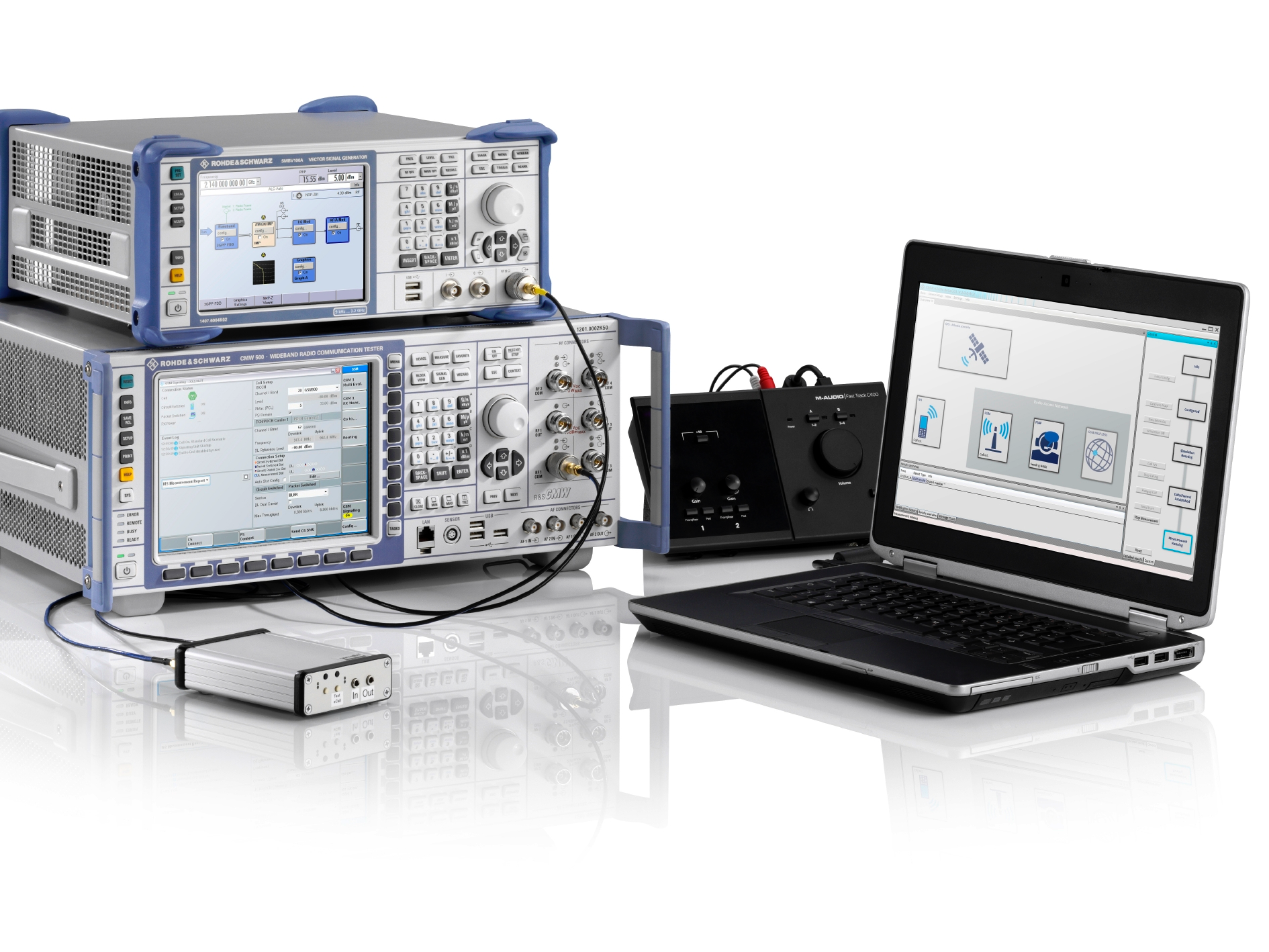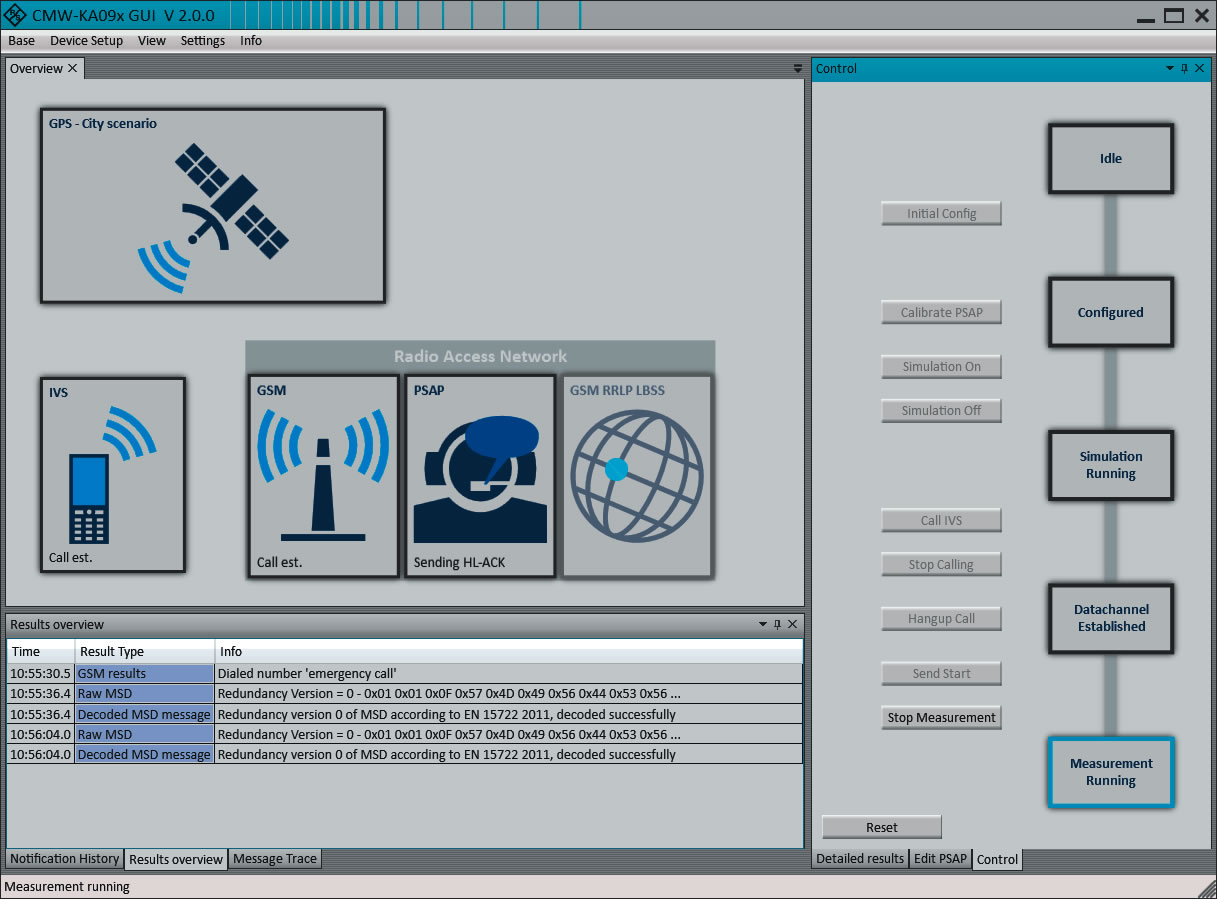Testing eCall in-vehicle systems
With the EU aiming to make the automatic eCall (emergency Call) system mandatory in all new cars by the end of 2015, conformance test systems that enable manufacturers to quickly and reliably verify their eCall solutions are in high demand. By Christian Hof, Product Manager, Mobile Radio Testers, Rohde & Schwarz.
In May 2010, the UN General Assembly proclaimed the period of 2011 to 2020 as the decade of action for road safety. During this period, international measures are to be taken to effectively reduce the high number of fatalities and serious injuries due to road traffic. The European Union’s contribution to this effort was to design the eCall automatic emergency call system. The Commission as well as the European Parliament and Council have approved the initiative. It stipulates that all new car and delivery vehicle models that come on the market in the EU after the cut-off date (not yet negotiated at the time of going to press) must support eCall operation.
eCall automatically contacts the emergency services in the event of a serious accident, which in turn is determined by the in-vehicle electronics. Typically, eCall activation is linked to airbag deployment, however it is up to the manufacturer to determine which sensors are integrated and according to which criteria. In addition, the system can also be activated manually to report an emergency that cannot be detected automatically, for example when a passenger has an urgent health problem, or an emergency involving another vehicle.

Figure 1 - The Rohde & Schwarz test solution enables users to verify whether their IVS modem can successfully initiate an emergency call, transmit the correct MSD and establish a voice connection with a PSAP.
Since eCall requires both a wireless communications connection and satellite positioning, even low-cost small cars will have to be delivered with this functionality ex works. Car manufacturers have the option of either integrating a pure eCall modem or equipping vehicles with eCall-compatible telematics units, which of course can also be used for infotainment purposes.
How eCall works
The eCall system consists of three basic components; the In-Vehicle System (IVS) which is normally an integral part of the telematics system), the telephone network that is used for communications (wireless and fixed network) and the Public Safety Answering Point (PSAP). When activated, the system dials the standardised pan-European emergency number ‘112’. A special flag that must be implemented by the network operator is transmitted with the signal to alert the called station that it is dealing with an eCall. Control is passed on to the PSAP, which asks the IVS to transmit the standardised 140B eCall Minimum Set of Data (MSD). The MSD contains all essential information that rescue services require in order to respond appropriately: vehicle position and heading (important on highways); time of accident; vehicle type; engine and/or fuel type (important for the fire department); and number of occupants (closed safety belts). Additional information is optional. The well-established in-band modem technology was chosen to transmit the MSD due to its extensive availability (GSM) and the prioritisation of voice telephony. It sends the data as beeps over the voice channel like in the days of acoustic couplers for telephones. The data is decoded at the PSAP and displayed on the operator’s console. Then a voice connection is established between the operator and the vehicle so that the parties can interact directly.

Figure 2 - The test system consists of an R&S CMW500 wideband radio communication tester for the network simulation, an R&S SMBV100A vector signal generator for the GNSS simulation and PC application software.
Developers of telematics systems as well as automobile manufacturers are faced with the task of testing eCall products from different perspectives:
- Module tests (some at the chipset level) are performed during the development phase, during production and when servicing the IVS to analyse design aspects and test module functions;
- The complete, functioning IVS must pass the functional checks and type approval tests laid down in the relevant conformance test specifications. For eCall, this is the European CEN/TS 16454 standard for the required end-to-end conformance tests; and
- The automobile manufacturer has to perform the most expensive tests; verifying that the IVS functions when installed in the vehicle. This includes crash tests to confirm that the system works in a specific vehicle model.
The Rohde&Schwarz test solution covers the second scope of tasks; standard-compliant functional testing of the complete eCall IVS. Figure 2 shows the setup. The test system provides the IVS with two interfaces; a mobile radio interface in the form of the R&S CMW500 wideband radio communication tester that simulates the network, and a GNSS interface in the form of the R&S SMBV100A generator that functions as a GNSS simulator and provides the required position information. Both devices are controlled by a connected PC using the R&S CMW-KA094 application software, which simulates the functions of the public safety answering point, controls the test sequence and provides the graphical user interface (Figure 3).

Figure 3 - The R&S CMW-KA094 application software simulates the functions of the public safety answering point and controls the test sequence.
The test programs check whether the IVS quickly and correctly contacts the public safety answering point, whether the MSD is transmitted in line with the standards and whether the final voice connection is correctly established. The system naturally provides more than just a simple Go/NoGo test. All relevant parameters are measured and logged. The three system components, PSAP, mobile radio network (simulation) and GNSS (simulation) can be influenced in many ways in order to test special circumstances and simulate any imaginable operating state. This provides the user with a comprehensive test solution that ranges from a fast, automatic IVS functional check to a detailed test of the interaction of all system components.










